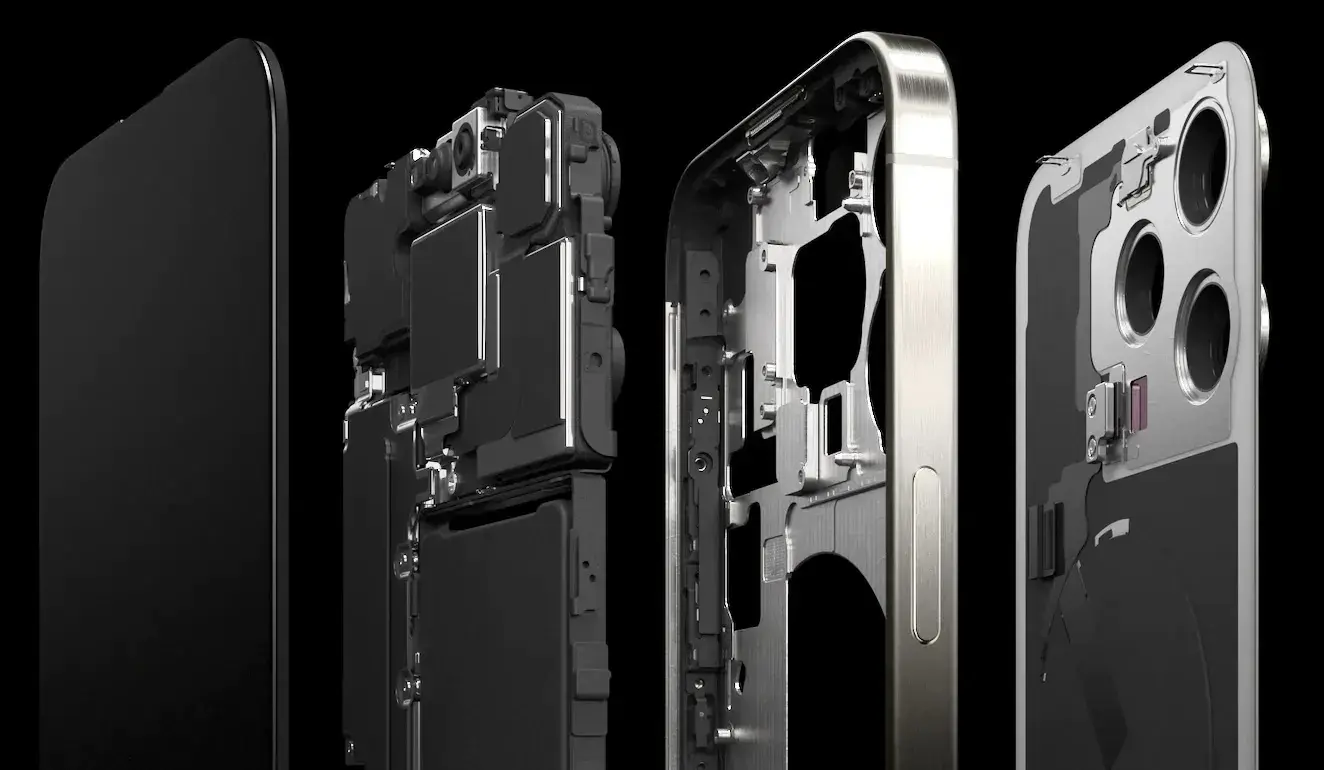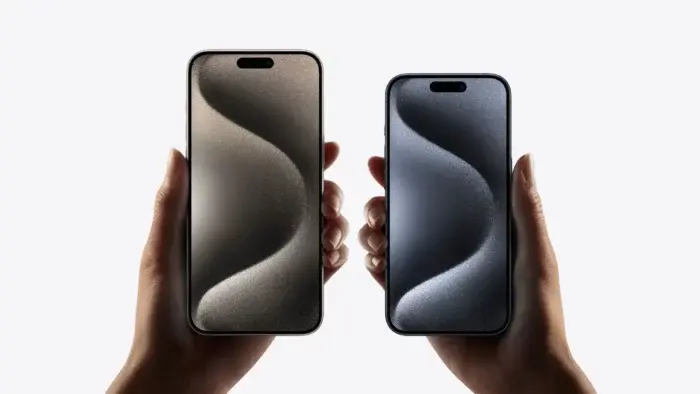In the ever-evolving world of smartphones, the rivalry between Apple’s flagship devices has taken a new turn with the release of the iPhone 15 and iPhone 15 Pro. These two powerhouses have set the stage for a duel that goes beyond the typical realm of performance and features. Instead, they are waging a battle between materials – aluminum and titanium. While titanium is often hailed as the undisputed champion of lightness and strength, the durability tests conducted by JerryRigEverything have unveiled a different story altogether.
The Battle of Metals: iPhone 15 vs. iPhone 15 Pro – A Deep Dive into Durability
A Clash of Materials
When Apple introduced the iPhone 15 Pro, they extolled the virtues of titanium, emphasizing its strength and lightweight properties. To truly understand the implications of this choice, it’s worth comparing the iPhone 15, constructed with aluminum, to the iPhone 15 Pro Max, forged from titanium. This comparison provides intriguing insights into the robustness of these two metals. In the wake of the iPhone 15 Pro’s scrutiny, JerryRigEverything turned its attention towards the iPhone 15 and 15 Plus, unraveling a tale of resilience and endurance.
The Ceramic Shield Screen: A Fortress Against Scratches
Both versions of the iPhone 15 sport Apple’s renowned Ceramic Shield screens. This impressive material proves its mettle when faced with the test of scratches, only succumbing to objects with a Mohs scale hardness of seven or higher.
For context, the Mohs scale serves as a benchmark for mineral hardness, ranging from 1 (talc) to 10 (diamond). A rating of seven corresponds to the hardness of quartz, a mineral celebrated for its durability. This means that the iPhone 15’s screen boasts impressive resistance against everyday wear and tear, promising to keep those unsightly scratches at bay.
Aluminum vs. Titanium Frames: The Ultimate Showdown
Despite the allure of its aesthetics and lightweight design, titanium doesn’t necessarily offer an unequivocal advantage when it comes to durability, contrary to common perception.
The aluminum frame of the classic iPhone 15, while potentially more susceptible to scratches, exhibits superior resistance to torsion and bending. In practical terms, this translates to the iPhone 15’s resilience against damage and deformation when subjected to force. Notably, these findings apply equally to the iPhone 15 Plus, despite its comparable size to the iPhone 15 Pro Max.
Unmasking Titanium’s Strengths and Weaknesses
Titanium, often praised for its robust yet lightweight attributes, doesn’t appear to bolster the structural strength of Apple’s smartphones, as one might expect. In contrast to the stainless steel frames employed in previous year’s models, titanium doesn’t deliver a significant increase in strength. In fact, JerryRigEverything’s meticulous tests unearth a crucial vulnerability in the Pro Max model. During a rigorous folding test, the titanium frame’s limitations are exposed, ultimately leading to the shattering of the glass back.
Digging Deeper into the Duel
The battle between aluminum and titanium in the iPhone 15 and iPhone 15 Pro exemplifies the multifaceted nature of material choice in smartphone design. While Apple’s marketing touted titanium’s virtues, real-world testing reveals that it doesn’t necessarily translate to superior durability.
The Aluminum Advantage: Despite its propensity for scratches, the aluminum frame of the iPhone 15 proves to be a stalwart defender against external forces. Whether it’s accidental drops or unexpected pressure, this material stands its ground. This robustness extends to the iPhone 15 Plus, proving that bigger isn’t always more fragile.
Titanium’s Tarnished Halo: On the other hand, the allure of titanium comes crashing down when put to the test. Despite its reputation for lightweight strength, it doesn’t translate into unbreakable might. The iPhone 15 Pro Max, with its titanium frame, falls short in durability, raising questions about the wisdom of this material choice.
The Implications for Users
What does this duel mean for users? It underscores the importance of understanding the nuances behind the materials used in our beloved devices. While titanium may be more glamorous, it doesn’t necessarily guarantee a tougher, more durable smartphone. In contrast, aluminum, despite its aesthetic drawbacks, can provide a sturdier foundation for everyday use.
It’s crucial for consumers to consider their usage patterns and needs when choosing between these two materials. Are you prone to dropping your phone? Do you lead an active lifestyle? These factors should weigh heavily in your decision-making process.
Verdict on the bend test battle
The iPhone 15 vs. iPhone 15 Pro battle has unveiled a fascinating narrative in the world of smartphone design. It reminds us that materials matter, but not always in the ways we might assume. Aluminum’s resilience against forces, despite its vulnerability to scratches, challenges the perception that lightweight materials are inherently weaker.
Conversely, titanium’s underwhelming performance in durability tests suggests that a shiny exterior doesn’t always correlate with structural strength. The iPhone 15 and iPhone 15 Pro have ignited a debate that extends beyond mere aesthetics, prompting users to scrutinize the trade-offs between style and substance.
Gizchina News of the week
The choice between aluminum and titanium isn’t just about the battle of materials; it’s about choosing the right device that aligns with your lifestyle and priorities. As technology continues to advance, it’s these thoughtful considerations that will guide us in making the smartest smartphone choices.
If you are still unsure which model to choose, here are some additional things to consider:
- Weight: The iPhone 15 Pro is lighter than the iPhone 15 due to its titanium frame. This could be a significant factor if you are looking for a phone that is easy to carry around.
- Price: The iPhone 15 Pro is more expensive than the iPhone 15. This is something to keep in mind if you are on a budget.
- Other features: The iPhone 15 and iPhone 15 Pro share many of the same features, but there are a few key differences. For example, the iPhone 15 Pro has a better camera system and a longer battery life.
Apple’s iPhone 15 Pro and Pro Max Face Overheating Challenge: A Closer Look at the Culprits
In the ever-evolving world of smartphones, Apple’s iPhone lineup has consistently set the bar for innovation and performance. However, the release of the iPhone 15 Pro and 15 Pro Max in 2023 brought forth an unexpected challenge – overheating. This issue, initially attributed to the powerful Apple A17 Pro SoC, has recently been uncovered as a result of a combination of design choices, leaving Apple to address the problem through software updates. In the following paragraphs, we’ll delve into the details of this overheating dilemma and explore the factors contributing to it.
The Initial Overheating Mystery
As reviews poured in from across the globe, and early adopters shared their experiences, one noticeable detail emerged – the iPhone 15 Pro and 15 Pro Max were running unusually hot, particularly when subjected to demanding tasks. While it might have seemed logical to blame the heat generation on the cutting-edge Apple A17 Pro SoC, it soon became evident that the root cause lay elsewhere, stemming from design decisions made by Apple’s engineering team.
A Bold Leap in Innovation
On paper, the iPhone 15 Pro and Pro Max represented a significant leap in innovation compared to their predecessors. These 2023 flagships boasted a titanium frame (albeit with a one-millimeter-thick titanium layer over aluminum), minimized bezels around the display, revamped internal component arrangements, and the introduction of the powerful Apple A17 Pro SoC. The Pro Max even featured a groundbreaking periscopic telephoto lens, a first for the iPhone.
Quality Control and Durability Concerns
However, the rollout of these flagship models was not without its share of concerns. Reports surfaced regarding build quality issues, such as smudges on the finishes and temporary discoloration of the side frame upon contact with hands. Durability tests conducted by popular YouTube channel JerryRigEverything further highlighted fragility concerns, especially for the Pro Max model. These issues raised questions about the compromise choices made by Apple during the design process.

The Overheating Conundrum
Adding to the list of woes, overheating problems began to plague iPhone 15 Pro and Pro Max users. Particularly when engaging in resource-intensive tasks like gaming or video recording. Initially, all fingers pointed at the A17 Pro SoC, a revolutionary chip produced using TSMC’s 3nm process, which was considered by some as being introduced prematurely by Apple. However, renowned analyst Ming-Chi Kuo conducted an investigation that shifted the blame away from the SoC.
A Deeper Dive into the Culprits
Kuo’s research unveiled that the overheating issue was, in fact, a result of yet another design compromise by Apple. It appears that the weight-saving measures, which reduced the devices by 19 grams compared to the iPhone 14 Pro, were not solely due to the switch from stainless steel to the aluminum-titanium combination. They also involved a downsized thermal dissipation system. The combined effects of a smaller dissipation system and the use of a titanium frame inevitably impacted the devices’ thermal management.
The Path Forward for Apple
Now, Apple faces the challenge of rectifying the overheating problem. There are three potential scenarios that the tech giant might consider:
- Optimization Solutions: Apple could opt for software updates aimed at optimizing the device’s performance and thermal management, addressing the issue in the short term without significant performance compromises.
- Performance Limitation: In a more drastic move, Apple might need to limit the device’s performance to prevent overheating, potentially leading to a drop in the powerful chip’s capabilities.
- Hybrid Approach: A middle-ground solution could involve a combination of software optimizations and a slight reduction in performance to ensure the device operates within acceptable temperature limits.
Apple’s Response
Apple is already hard at work trying to find a solution to this issue. The outcome of their efforts will have significant implications. Not only for the users who have already invested in the iPhone 15 Pro and Pro Max but also for potential buyers. The initial sales of these models have been promising, particularly for the Pro Max variant. But the resolution of the overheating problem could influence the future trajectory of these flagship devices.
In conclusion, while the iPhone 15 Pro and Pro Max promised groundbreaking advancements, they also brought along unforeseen challenges. The overheating issue, initially attributed to the A17 Pro SoC, has been revealed as a result of design compromises made by Apple. As the tech giant seeks solutions through software updates, the smartphone industry and Apple enthusiasts alike will be watching closely to see how this situation unfolds. The ultimate goal, of course, is to ensure that the impressive capabilities of these flagship devices are not hindered by overheating concerns, allowing users to fully embrace the cutting-edge technology Apple has to offer.





